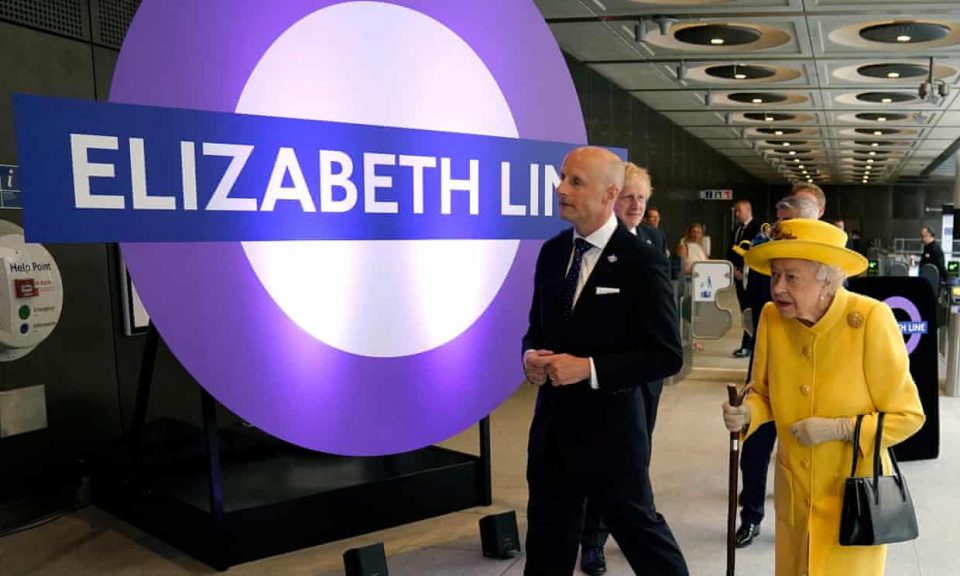We’re halfway to achieving a billion journeys, and this remarkable journey has only just commenced. In the midst of the recent turbulence, challenges, and uncertainties facing Britain’s rail system, a shining symbol of optimism emerges: the Elizabeth line.
Now representing one in every seven rail journeys nationwide, the east-west cross-London railway has exceeded expectations and transformed the commuting preferences and urban landscape of the south-east.
For fortunate Londoners, the upgrade from the Tube to this faster, cleaner, and quieter service has been a welcome change. However, as the north of England awaits promised enhancements in rail service and a chancellor advocating for infrastructure spending, the Elizabeth line exemplifies the nation’s capacity to undertake significant projects—major proof that the public will engage with such improvements.
Last month, the Elizabeth line celebrated the achievement of 500 million passengers since its opening in May 2022. This influx has nearly restored the rail sector’s passenger figures to pre-pandemic levels, reinforcing the optimism among industry professionals who predict a resurgence in usage.
While affluent commuters from the stockbroker belt have yet to return in numbers comparable to those before the pandemic, stations on the Elizabeth line, particularly Liverpool Street and Paddington, have overtaken Waterloo to become some of the busiest in Britain.
The story of the line is also one of regeneration, as evidenced by the development surrounding Paddington’s modern office complexes and new residential and commercial opportunities sprouting up near stations like Woolwich and Thamesmead to the east.
Recent analyses from Transport for London (TfL) and engineering firm Arup, which examined the line’s impact using data that did not fully encompass the surge in passengers, revealed that over 90% of users believe it has positively affected their neighborhoods. Nearly two-thirds indicated easier access to jobs and employment.
According to TfL’s analysis, areas within a kilometre of an Elizabeth line station in London saw a rise in new housing construction by 8-14%, and around 400,000 jobs have been created since 2015. Housing prices near these stations have also seen a significant surge.
During the report announcement, London’s mayor, Sadiq Khan, remarked: “Investing in high-quality transport infrastructure yields substantial benefits for job creation, growth, and the new housing we require in London and beyond.”
Current TfL statistics reveal that growth on the Elizabeth line is surpassing budgeted projections, with a 16% traffic increase anticipated in the first quarter of 2024-25. Howard Smith, the director of the Elizabeth line, noted that the service has not only enhanced connectivity and capacity but also “transformed accessibility,” featuring level boarding and lifts throughout, and has had a crucial economic impact nationwide through a UK-wide supply chain, including additional train manufacturing at Alstom’s plant in Derby.
“We’ll remain focused on improvements … and anticipate introducing ten more Elizabeth line trains to meet passenger demand, including service at Old Oak Common when it opens as the initial terminus for HS2,” he stated.
Although confidence in infrastructure projects has certainly been shaken—particularly due to the HS2 project’s struggles with modified plans and inflated budgets—the Old Oak Common connection is moving forward. The Elizabeth line faced its fair share of delays and indecision, ultimately finishing construction three years behind schedule and £3.5 billion over budget—an indication of how quickly challenges are forgotten once a project is completed.
“It’s a remarkable leap in technology and that’s what makes it so appealing, unlike any underground railway in any city,” said Christian Wolmar, author of *The Story of Crossrail*, the line’s original name.
“Stepping off the cramped tube at a busy station like Tottenham Court Road and into these expansive platforms with 250-metre long trains feels like entering an entirely different world … If only we could have three or four lines like this, the entire city would be transformed. Unfortunately, we lack the vision and funding to make such concepts a reality.”
While the line’s advanced technology—from control operations to spacious platforms, safety barriers, and roomy carriages—doesn’t shield it from rail industry challenges, it anticipates hurdles ahead, such as upcoming driver strikes called by Aslef over pay. Sharing tracks with the national network has made certain areas, particularly to the west, vulnerable to delays, and because the trains lack onboard toilets, they can become particularly uncomfortable during outages, such as the overhead cable incident in December 2023.
Nonetheless, the latest performance metrics show that over 90% of trains are operating on time with less than 2% cancellations, and customer satisfaction scores significantly exceed those of the broader TfL network, indicating substantial improvement alongside increasing ridership.
Around 35% of its passengers are drawn from what is termed “abstraction” by the Department for Transport—capturing riders from other services who might otherwise opt for a Great Western train from Maidenhead, navigate through the West End on the Central line, or pay a premium for the Heathrow Express. An additional third were already using TfL Rail, the outer London service that has been integrated into the Elizabeth line.
However, nearly 30% of riders would have otherwise driven or previously deemed the journey not worthwhile.
This is crucial for the rail sector, as investment decisions often hinge on two contrasting viewpoints: traditional Treasury cost-benefit analyses, which critics argue favor building more infrastructure or enhancing usage of existing routes, versus the belief that improved public transportation will naturally spur new housing, jobs, and travel.
Given its location in one of Britain’s most densely populated regions, the Elizabeth line, supported by a guaranteed user base, may never convince the first perspective. Still, the appeal of improved national connectivity is evident in the success of the decade-long Borders Rail project, a 30-mile line from Edinburgh to Tweedbank, and the immediate popularity of the newly reestablished Northumberland Line, which saw 50,000 passengers in its first month.
Henri Murison, chief executive of the Northern Powerhouse Partnership, remarked: “The projected benefits are often underestimated … They fail to recognize the transformative potential of these projects.”
Despite growing concerns over relative neglect in the north, Murison emphasized the need to highlight the Elizabeth line’s success: “It provides a basis for informed discussions on what’s achievable: it has generated immense opportunities in London and could do the same in northern cities with similar lines—leading to considerable broader investment as well.”
Rachel Reeves has relaxed fiscal constraints and pledged support for infrastructure development, but expectations for public rail funding remain subdued following the cancellation of HS2’s northern segment. After a decade of unfulfilled promises since what Murison calls the “grandiose commitments” to a high-speed link across the north, piecing together modern developments—like the TransPennine upgrade, a proposed new Bradford station, and the Manchester airport connection—now appears to be the more reliable route forward.
Regardless of how long infrastructure improvement takes, the Elizabeth line serves as a testament to what is worthy of pursuit. As Wolmar noted: “It strongly illustrates that when you invest a bit more in making infrastructure appealing and functional, it attracts people. It justifies public expenditure, especially when executed to a high standard.”


